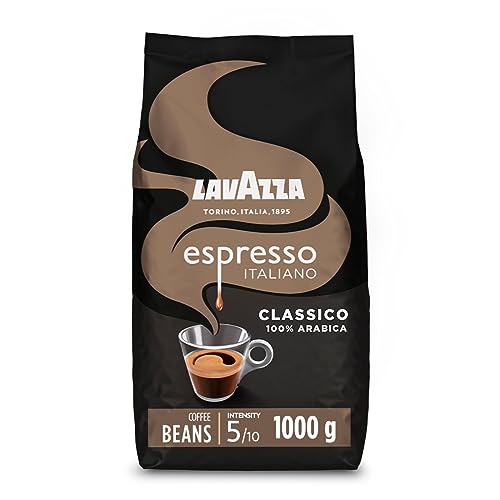arabica coffee beans 1kg (
you could look here)
The arabica coffee bean is a sought-after species of coffee. It thrives at elevations along the equator and requires specific climate conditions to thrive.

New varieties of coffee have been developed that are more resistant against the effects of climate change and disease. These new varieties have distinctive flavors that set them apart from other coffee types.
Origin
Arabica beans are the most well-known beans used in Western coffee blends and make up around 60% of all coffee production around the world. They are more tolerant of heat and drought than other varieties of coffee, making them easier to grow in warmer climates. These beans produce an extremely creamy and rich drink with a smooth flavor and lower caffeine content. They are also popular for espresso-based drinks.
The Coffea arabica plant is an evergreen shrub or small tree that is found at higher elevations, and prefers tropical climates with moderate temperatures, which is ideal between 15 and 24 degrees Celsius (59-75 degF). The plant requires a consistent amount of rainfall ranging between 1,200 and 2,200 millimeters a year. It has a high level of genetic diversity, and researchers have created a variety of cultivars for cultivation. Bourbon and Typica are two of the most important arabica coffee cultivars of today.
Wild plants of the genus Coffea are bushy and their leaves are simple elliptic ovates to the oblong size, 6-12cm (2.5-3 in) long and 4-8 cm (2-3 in) wide. The fruits are drupes that contain two seeds that are commonly referred to as coffee beans. They are enclosed by an outer fleshy membrane that is typically black, purple, or red and an inner skin that is typically pale yellow to pink.
Raw coffee beans have been enjoyed for centuries because of their unique flavor and stimulating properties. The Robusta variety, which is the most popular blend of coffee, is
Best coffee beans 1kg consumed lightly or medium-roasted. This keeps its natural characteristics and flavor. The first written record of coffee drinking dates back to around 1,000 BC, in the Kingdom Kefa, Ethiopia. Members of the Oromo Tribe crushed and mixed the beans with fat to make a paste which was consumed as a stimulant.
The geographic location, conditions and farming methods of the region from which
coffee 1kg beans are harvested determine the specific origin of the coffee. Similar to apples which are grown in a number of different regions and can be distinguished by their distinctive taste and texture. To determine the source of a specific coffee bean, FT/MIR spectrophotometry can be used to identify indicators, like trigonelline and chlorogenic acid, that are different based on the climate in which the bean was grown.
Taste
The taste of arabica coffee beans is soft and delicate, with fruity or chocolate undertones. It is low in bitterness and astringency, and is considered to be one of the top-quality varieties available that are available. It also has a lower percentage of caffeine than Robusta coffee, making it ideal for those who prefer a flavorful cup of joe without the high-sugar content of other drinks.
The roast level, processing method, and the variety of arabica beans can influence the taste. There are many different types of arabica coffee, like the Typica variety, Bourbon, Caturra, and Kona, and each has distinct flavors. Additionally, the various levels of sugar and acidity of arabica coffee can affect the overall flavor of the coffee.
The coffee plant is found in the wild at high elevations near the equator, but is most commonly cultivated by people at lower elevations. The plant produces fruit in the colors of red, yellow, or purple that contain two seeds. These seeds are referred to as coffee beans and are what give a cup of arabica coffee its distinct flavor. Once the beans are cooked, they get the familiar brown color and taste that we've come to be familiar with and enjoy.
After the beans are harvested after harvest, they can be processed by either a wet or dry method. The beans that have been processed with water are cleaned to get rid of the pulp on the outside and then fermented prior to being dried in the sun. The wet method preserves the arabica coffee's natural flavor profiles while the dry process produces an earthy and robust flavor.
Roasting arabica beans is an essential step in the production of coffee, as it can alter the taste and aroma of the final product. Light roasts highlight the inherent flavors of the arabica bean. On the other hand, medium and darker roasts enhance the flavors of the origin along with the roasted coffee characteristics. If you're looking to enjoy the perfect cup of coffee that is unique, choose a blend with 100 arabica beans. These premium beans have distinct aroma and taste that isn't replicated by any other blend of coffee.
Health Benefits
Coffee is one of the most sought-after hot drinks throughout the world. The reason for that is the high amount of caffeine that provides you with the energy needed to get your day going. It also offers numerous health benefits and keeps you awake throughout the day. It is a distinctive and concentrated flavour that can be enjoyed in many different ways. You can drink it as a hot drink, add it to ice cream or even sprinkle it on top of desserts.
Arabica beans are the most adored and most favored option of all coffee brands as they provide a balanced cup of coffee with a smooth and creamy texture. They are usually roasted to a medium to dark level and are characterized by a chocolatey or fruity flavor. They are also known to have a smoother flavour and less bitterness than other beans, such as robusta.
The origins of arabica beans go back to the Oromo tribes who first began drinking it in Ethiopia as stimulant in the year 1000 BC. In the 7th century, Arabica was officially named as the coffee bean after it was transported to Yemen where scholars roast and ground them. They then made the first written record of coffee making.
In India over 4,500
organic coffee beans 1kg plantations are operating. Karnataka is the country's largest producer. The state has produced a record of 2,33,230 metric tons of arabica beans in the year 2017-18. Karnataka has an array of arabica coffee varieties, including Coorg Arabica (also known as Coorg Arabica), Chikmaglur Arabica (also called Chikmaglur Arabica), and Bababudangiris Arabica.
Green coffee beans are high in antioxidants and have high quantities of chlorogenic acids, which belong to a class of phenolic compounds. These are believed to have anti-diabetic and cardioprotective properties. When the beans are cooked and roasted, they lose between 50 and 70 percent of these compounds.
In addition to caffeine, arabica beans contain a small amount of minerals and vitamins. They are rich in manganese, potassium and magnesium. The beans are a good source of fiber, which helps to reduce cholesterol and aids in weight loss.
Caffeine Content
When roasted and ground and ground, arabica coffee beans have a caffeine content that ranges between 1.1% to 2.9 percent which equates to 84 mg to 580 mg of caffeine per cup. This is significantly less than the caffeine content of Robusta beans which can have up to 4.4 percent caffeine. However, the amount of caffeine consumed will depend on a variety of factors such as the method of brewing and water temperature (caffeine is more readily extracted at higher temperatures) and the length of time the beans are roasting (a darker roast usually contains more caffeine than a light roast) and the extraction method.
Coffee is also a major source of chlorogenic acids, which belong to the phenolic acid family. They have antioxidant properties. These compounds have been shown to decrease the risk of developing diabetes heart disease, diabetes, and liver disease. They are also known to boost the immune system and aid in weight loss.
Coffee also has a number of vitamins and minerals. It has Niacin, magnesium and Riboflavin. It also has potassium and a small amount of sodium. It is crucial to remember that coffee in its original form, without milk or sugar, should be consumed in moderation as it can cause diuretic effects on the body.
The coffee plant has an interesting background as it was first discovered by the Oromo tribes of Ethiopia in the year 1000 BC. It was used by tribesmen to sustain themselves on long journeys, but it wasn't until after that it was cultivated into a beverage and was cultivated after the Arabian monopoly was removed and it was named. Since then it has grown to become a popular drink across the world and is now a global industry with countless benefits for both the environment and human health. The key to its success is that it combines an exquisite taste with many health-promoting properties. When enjoyed in moderation, it can be an excellent addition to your diet. Apart from being delicious, it can also provide you with energy and help you be more productive and alert throughout your day.
